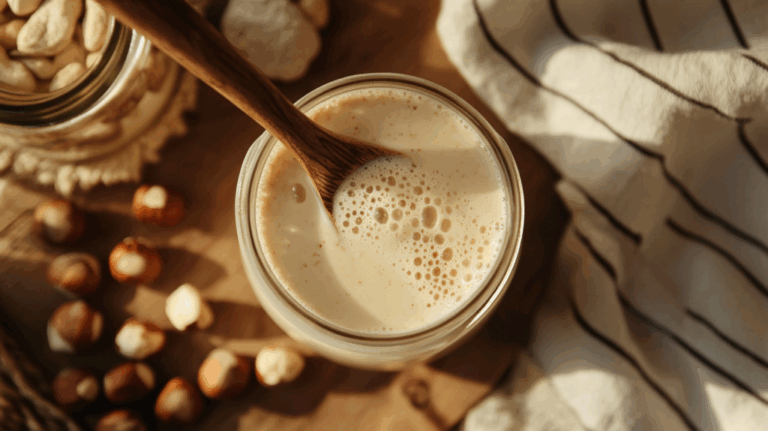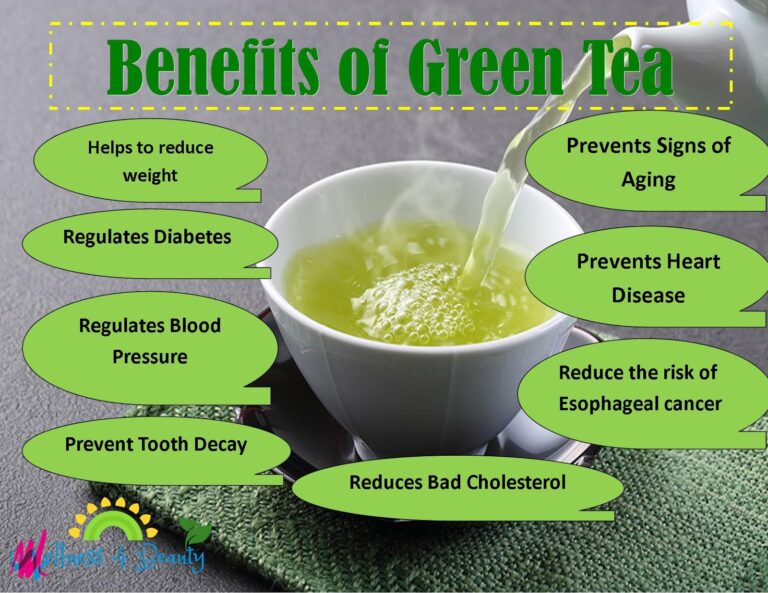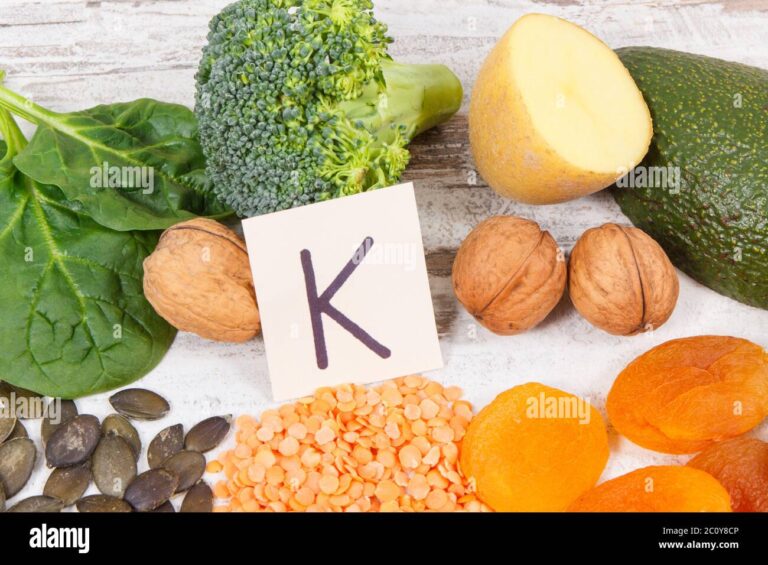Keep Your Ticker Healthy: Celery’s Role in Natural Blood Pressure Management
I. The Silent Scourge and the Whispering Green: An Overture to Cardiovascular Wellness
In the intricate symphony of the human body, the heart stands as the tireless maestro, orchestr conducting the flow of life. Yet, for millions across the globe, this vital rhythm can be subtly yet profoundly disrupted by a silent, insidious condition: hypertension, or high blood pressure. It’s a stealthy adversary, often presenting no overt symptoms until it has already begun to exact a heavy toll, paving the way for heart attacks, strokes, kidney disease, and even cognitive decline. The numbers are staggering, painting a global picture of a health crisis that demands our urgent attention and, crucially, our proactive engagement.
In the face of this modern epidemic, humanity has embarked on a relentless quest for solutions, often turning to the pharmaceutical marvels of contemporary medicine. These interventions, while undeniably life-saving for many, frequently come with their own suite of side effects and the lifelong commitment of daily dosage. This reality has spurred a burgeoning interest in natural, holistic approaches – a return to the wisdom of nature, where remedies are often found in the most unassuming forms.
Enter the humble celery stalk. Often relegated to a mere crunchy accompaniment on a crudités platter or a fibrous addition to a soup base, celery (Apium graveolens) possesses a lineage steeped in medicinal tradition, hinting at a power far exceeding its unassuming appearance. For centuries, across diverse cultures, it has been revered not just as a food, but as a therapeutic agent, a testament to its intrinsic value. In an era increasingly attuned to the concept of "food as medicine," celery stands poised to reclaim its rightful place in the pantheon of natural health allies, particularly in the critical domain of cardiovascular wellness.
This article embarks on a journey to unravel the multifaceted narrative of celery’s role in natural blood pressure management. We will delve into the complex mechanics of hypertension, explore celery’s rich historical tapestry, and meticulously dissect its bioactive compounds, revealing the scientific symphony that allows this verdant stalk to whisper promises of a healthier ticker. Our aim is to bridge ancient wisdom with cutting-edge scientific understanding, illuminating how this seemingly simple plant can be a profound ally in the ongoing quest to keep our hearts healthy and our blood pressure in harmonious balance.
II. Unraveling the Ticker’s Tale: Understanding the Enigma of Hypertension
Before we can appreciate the potential of celery, it is imperative to comprehend the adversary it aims to address. Blood pressure, in its simplest definition, is the force exerted by circulating blood against the walls of the body’s arteries, the major blood vessels. It is measured in millimeters of mercury (mmHg) and expressed as two numbers: systolic pressure (the top number), which reflects the pressure when your heart beats and pumps blood, and diastolic pressure (the bottom number), which indicates the pressure when your heart rests between beats. A healthy blood pressure typically hovers around 120/80 mmHg.
Hypertension is diagnosed when blood pressure consistently remains elevated, usually at or above 130/80 mmHg. The classification often progresses through stages: elevated, stage 1 hypertension, and stage 2 hypertension, with a hypertensive crisis representing a dangerously high and immediate medical emergency. What makes hypertension so perilous is its largely asymptomatic nature. It is often dubbed the "silent killer" because it can advance without noticeable symptoms, silently damaging blood vessels and vital organs over years.
The long-term ramifications of uncontrolled hypertension are dire and far-reaching. The persistent high pressure forces the heart to work harder, leading to an enlarged and weakened heart muscle. It can damage the delicate lining of arteries, making them stiffer and narrower, a condition known as atherosclerosis. This arterial damage is a precursor to a cascade of life-threatening events:
- Heart Attack: When blood flow to a part of the heart is blocked.
- Stroke: When blood flow to a part of the brain is interrupted or reduced, depriving brain tissue of oxygen and nutrients.
- Kidney Disease: High blood pressure can damage the small blood vessels in the kidneys, impairing their ability to filter waste from the blood.
- Heart Failure: The heart becomes too weak or stiff to pump blood effectively.
- Vision Loss: Damage to the blood vessels in the eyes.
- Vascular Dementia: Reduced blood flow to the brain can contribute to cognitive decline.
The etiology of hypertension is complex and often multifactorial. While some cases are linked to underlying conditions (secondary hypertension), the vast majority are classified as essential or primary hypertension, meaning there’s no identifiable single cause. However, a constellation of risk factors is well-established: genetics, age, obesity, physical inactivity, excessive sodium intake, insufficient potassium, chronic stress, excessive alcohol consumption, and smoking.
Conventional medical management often involves lifestyle modifications alongside pharmacological interventions. Diuretics, ACE inhibitors, ARBs, beta-blockers, and calcium channel blockers are common prescriptions, each targeting different physiological pathways to lower blood pressure. While effective, these medications can come with side effects ranging from dizziness and fatigue to electrolyte imbalances and persistent coughs, often leading to issues with patient compliance and the desire for complementary strategies. This landscape underscores the growing global interest in natural, preventive, and supportive measures, where dietary interventions and functional foods are increasingly recognized for their profound potential. It is within this burgeoning paradigm that celery emerges as a compelling subject of inquiry.
III. Celery’s Pedigree: A Journey Through Time and Terroir
The story of celery is not just a botanical narrative; it’s a testament to humanity’s enduring relationship with the natural world and our innate ability to discern healing properties within the flora around us. Apium graveolens, as it is known scientifically, belongs to the Apiaceae family, a lineage that also includes parsley, carrots, and dill – a family rich in aromatic compounds and therapeutic potential.
Celery’s roots stretch back millennia, far preceding its modern-day culinary fame. Its earliest documented use dates to ancient Egypt, where archaeologists have unearthed celery garlands in the tombs of pharaohs, suggesting its significance extended beyond mere sustenance, perhaps into ritualistic or symbolic realms. In ancient Greece, celery was not primarily a food but a revered medicinal herb. The physician Hippocrates, often considered the father of Western medicine, reportedly prescribed celery for various ailments, including nervousness, sleep disorders, and even as a diuretic. Its leaves were used to crown victorious athletes in the Nemean Games, symbolizing strength and vitality – a subtle hint at its physiological benefits. The Romans, too, integrated celery into their pharmacopeia, employing it for its purported digestive and anti-inflammatory properties.
Across Asia, particularly in traditional Chinese medicine (TCM) and Ayurvedic practices, celery has held a prominent place for centuries. In TCM, it was often used to "calm the liver" and "clear heat," concepts that align remarkably with modern understandings of its potential to reduce inflammation and modulate blood pressure. Ayurvedic texts describe celery as a natural diuretic and a beneficial herb for balancing various bodily systems.
Despite this illustrious historical pedigree, celery gradually transitioned in the Western world from a medicinal herb to a culinary vegetable, particularly after the 17th century when Italian horticulturists developed the milder, blanched varieties we recognize today. Its crisp texture and refreshing taste made it a popular addition to salads, soups, and stews, but its profound therapeutic qualities began to fade into the background, overshadowed by its gastronomic appeal.
Yet, beyond the crunch and the refreshing taste, celery is a nutritional powerhouse. It is remarkably low in calories, making it a staple for those mindful of weight management, but it offers a surprisingly rich profile of vitamins and minerals. It is an excellent source of vitamin K, essential for blood clotting and bone health, and a good source of vitamin C, an antioxidant crucial for immune function. It also provides folate, vitamin B6, and modest amounts of vitamin A. Its mineral content includes manganese, calcium, and notably, potassium and magnesium – two electrolytes critically involved in blood pressure regulation. And, of course, its most evident attribute: fiber, both soluble and insoluble, which aids digestion, promotes satiety, and contributes to overall gut health, indirectly supporting cardiovascular wellness.
The "story" of celery, therefore, is one of rediscovery. From ancient ceremonial garlands and medicinal prescriptions to its modern-day resurgence as a functional food, celery embodies a compelling narrative of how a plant, seemingly simple, can harbor a complex chemistry that holds profound implications for human health. It’s time to peel back the layers of its modern culinary identity and re-examine the alchemist within its stalk.
IV. The Alchemist Within the Stalk: Deconstructing Celery’s Bioactive Blueprint
The true magic of celery, its ability to positively influence blood pressure, lies not in a single compound but in a sophisticated synergy of bioactive constituents. It is a carefully orchestrated ensemble, each player contributing to the overall harmony of cardiovascular health. Let us meticulously dissect these key compounds and understand their mechanisms of action.
1. Phthalides: The Vasodilatory Virtuosos
Perhaps the most renowned group of compounds in celery, particularly for its blood pressure-lowering effects, are the phthalides. Among these, 3-n-butylphthalide (NBP) stands out as the most extensively studied. NBP and other related phthalides are responsible for celery’s characteristic aroma and flavor, but their physiological impact is far more significant.
Mechanism of Action:
Phthalides primarily exert their hypotensive effects by acting as smooth muscle relaxants. The walls of our arteries contain layers of smooth muscle cells, which can contract or relax to regulate blood vessel diameter. When these muscles contract, the vessels narrow, increasing peripheral resistance and, consequently, blood pressure. Phthalides, particularly NBP, appear to directly relax these smooth muscles, leading to vasodilation – the widening of blood vessels. This relaxation reduces the overall resistance to blood flow, allowing the heart to pump blood more easily and thus lowering blood pressure.
Furthermore, some research suggests that phthalides may influence the production of stress hormones, such as catecholamines, which are known to constrict blood vessels and elevate heart rate. By potentially modulating the release or action of these hormones, phthalides can contribute to a more relaxed vascular state. Early animal studies, particularly those involving hypertensive rats, have shown consistent reductions in blood pressure following the administration of celery extracts rich in phthalides, laying a strong foundation for further human research.
2. Dietary Nitrates: The Nitric Oxide Nexus
In recent years, the role of dietary nitrates in cardiovascular health has garnered significant attention, largely due to research on beetroot. Celery, too, is a notable source of these beneficial compounds.
Mechanism of Action:
When consumed, dietary nitrates are converted in the body, primarily by oral bacteria, into nitrites. These nitrites are then further reduced to nitric oxide (NO) within the body. Nitric oxide is a potent gaseous signaling molecule, a critical component of endothelial function – the health and proper functioning of the inner lining of blood vessels. NO is a powerful vasodilator, meaning it signals the smooth muscle cells in arterial walls to relax, widening the blood vessels and improving blood flow. This effect directly contributes to lowering blood pressure.
Moreover, nitric oxide plays a crucial role in maintaining the elasticity and flexibility of arteries, preventing the stiffening that often accompanies hypertension and aging. It also exhibits anti-platelet aggregation properties, reducing the risk of blood clot formation. Celery, like beetroot, offers a natural, food-based pathway to boost NO production, providing a sustained and gentle vasodilatory effect.
3. Potassium: The Sodium Antagonist
Potassium is an essential mineral and electrolyte, and its role in blood pressure regulation is well-established and universally recognized. Celery is a good source of this vital nutrient.
Mechanism of Action:
Potassium works synergistically with sodium to maintain fluid balance and nerve and muscle function. In the context of blood pressure, potassium acts as a counterbalance to sodium. High sodium intake is a significant contributor to hypertension, as it causes the body to retain water, increasing blood volume and pressure. Potassium, on the other hand, encourages the kidneys to excrete more sodium through urine, thereby reducing fluid retention and blood volume.
Furthermore, potassium contributes to the relaxation of blood vessel walls, similar to the action of phthalides, further promoting vasodilation. A diet rich in potassium and lower in sodium is a cornerstone of the DASH (Dietary Approaches to Stop Hypertension) diet, and celery fits perfectly into this dietary framework.
4. Magnesium: The Natural Calcium Channel Modulator
Magnesium, another critical mineral abundant in celery, is often overlooked but plays a pivotal role in over 300 enzymatic reactions in the body, many of which are vital for cardiovascular health.
Mechanism of Action:
Magnesium acts as a natural calcium channel blocker-like agent. Calcium is essential for muscle contraction, including the smooth muscles in blood vessel walls. By interfering with the entry of calcium into these smooth muscle cells, magnesium helps them relax, leading to vasodilation and reduced peripheral resistance.
Beyond its direct effects on blood vessels, magnesium also contributes to nerve and muscle function, helps regulate heart rhythm, and can reduce inflammation – all factors that indirectly support healthy blood pressure. Its synergistic action with potassium amplifies the overall beneficial effect on the cardiovascular system.
5. Coumarins: Beyond Anticoagulation
Coumarins are a class of organic compounds found in various plants, including celery. While some coumarins (like warfarin, a synthetic derivative) are potent anticoagulants, the coumarins found naturally in celery operate differently.
Mechanism of Action:
The coumarins in celery are thought to possess mild diuretic properties, encouraging the kidneys to excrete excess fluid and sodium, which can contribute to lower blood pressure. Additionally, some research suggests they may have anti-inflammatory and antioxidant effects, contributing to overall vascular health and reducing the stiffness of arteries.
6. Flavonoids (Apigenin, Luteolin): The Antioxidant and Anti-inflammatory Guardians
Celery is a rich source of various flavonoids, potent plant pigments with significant antioxidant and anti-inflammatory properties. Key flavonoids found in celery include apigenin and luteolin.
Mechanism of Action:
- Antioxidant Power: Flavonoids combat oxidative stress, a state where there’s an imbalance between free radicals and antioxidants in the body. Oxidative stress can damage blood vessel linings, contribute to inflammation, and impair endothelial function, all of which elevate blood pressure. By neutralizing free radicals, flavonoids protect the delicate vascular endothelium.
- Anti-inflammatory Effects: Chronic low-grade inflammation is increasingly recognized as a driving force behind atherosclerosis and hypertension. Apigenin and luteolin have demonstrated anti-inflammatory actions, reducing the production of pro-inflammatory cytokines and protecting arterial walls from damage.
- ACE Inhibition: Some flavonoids, including those found in celery, have been shown in vitro to inhibit the activity of Angiotensin-Converting Enzyme (ACE). ACE is an enzyme that converts angiotensin I to angiotensin II, a potent vasoconstrictor (narrows blood vessels) and stimulator of aldosterone (which increases sodium and water retention). By inhibiting ACE, these flavonoids can help relax blood vessels and reduce blood volume, similar to how pharmaceutical ACE inhibitors work.
7. Fiber: The Indirect but Impactful Ally
While not directly impacting blood pressure through a specific biochemical pathway, the high fiber content of celery plays an indirect but crucial role in cardiovascular health.
Mechanism of Action:
Dietary fiber aids in digestion, promotes a healthy gut microbiome, and helps regulate blood sugar levels. A healthy gut has been linked to improved cardiovascular outcomes. Furthermore, fiber contributes to satiety, which can assist in weight management. Obesity is a significant risk factor for hypertension, so any dietary component that supports healthy weight indirectly aids blood pressure control. Fiber can also help reduce cholesterol levels, further contributing to overall arterial health.
In essence, celery is not a one-trick pony. Its effectiveness in blood pressure management stems from a harmonious blend of phthalides promoting vasodilation, nitrates boosting nitric oxide, potassium and magnesium balancing electrolytes and relaxing muscles, coumarins offering mild diuretic effects, and flavonoids providing antioxidant and anti-inflammatory protection while potentially inhibiting ACE. This intricate biochemical symphony makes celery a compelling subject for those seeking natural avenues to support their cardiovascular health.
V. From Lab Bench to Lived Experience: The Evidence Unfolds
The journey of scientific discovery often begins in the controlled environment of the laboratory, progresses through animal models, and ultimately aims for validation in human clinical trials. Celery’s potential in blood pressure management has followed a similar trajectory, with a growing body of evidence supporting its traditional uses.
Animal Studies: Laying the Groundwork
Much of the initial scientific interest in celery’s hypotensive properties was sparked by compelling results from animal studies. Researchers have consistently observed that celery extracts, particularly those rich in phthalides, can significantly lower blood pressure in hypertensive animal models, such as spontaneously hypertensive rats.
For instance, studies have shown that NBP (3-n-butylphthalide) from celery can reduce systolic and diastolic blood pressure, improve blood lipid profiles, and protect against oxidative stress in the hearts of these animals. These studies often measure changes in vascular resistance, endothelial function markers, and even the expression of genes related to blood pressure regulation. The consistency of these findings across various animal models has provided a strong rationale for exploring celery’s effects in humans, suggesting a real physiological impact.
Human Observational Studies and Anecdotal Wisdom
While large-scale, randomized controlled human trials specifically on celery and hypertension are still emerging, observational studies on dietary patterns rich in vegetables (like the DASH diet, which includes celery) consistently demonstrate a positive correlation with lower blood pressure and reduced cardiovascular risk. These studies suggest that individuals who consume a diet abundant in whole, plant-based foods, including celery, tend to have better blood pressure control compared to those with diets high in processed foods and saturated fats.
Beyond the scientific literature, there is a wealth of anecdotal evidence and traditional wisdom surrounding celery’s use for "calming the blood." Stories abound of individuals incorporating celery juice or raw celery into their daily routines and experiencing noticeable improvements in their blood pressure readings. While anecdotes alone cannot substitute rigorous scientific proof, they often serve as valuable pointers, guiding researchers toward promising natural remedies.
Clinical Trials: The Quest for Definitive Answers
The leap from animal studies and observational data to definitive human clinical trials is a crucial step in establishing robust scientific evidence. Conducting such trials for whole foods, however, presents unique challenges compared to single-compound pharmaceuticals. Dosage standardization, placebo control, and isolating the effects of one food amidst a complex human diet are intricate hurdles.
Despite these challenges, some smaller human studies have begun to emerge, offering promising insights:
- Early Pilot Studies: Some preliminary human trials have investigated the effects of celery seed extracts or whole celery consumption on blood pressure. For example, a study published in the Journal of Medicinal Food explored the effect of celery seed extract on blood pressure in hypertensive patients, noting a reduction in both systolic and diastolic readings.
- Focus on Celery Juice: The recent "celery juice craze" has spurred some interest, leading to smaller intervention studies. While many claims require further validation, studies on dietary nitrates from vegetables, including celery, have shown acute reductions in blood pressure in healthy individuals and those with pre-hypertension.
- Synergistic Effects: Researchers are also exploring how celery, when integrated into a broader healthy diet, contributes to overall cardiovascular benefits. The strength of celery might lie not just in its individual compounds, but in their synergistic interaction within the context of a balanced dietary pattern.
It is important for a knowledgeable audience to understand that while the evidence is compelling and growing, the scientific community still calls for more large-scale, long-term, randomized, placebo-controlled human trials specifically designed to quantify the precise dose-response relationship of celery and its extracts in diverse populations with varying degrees of hypertension. Such studies would provide the definitive data needed to integrate celery more formally into clinical guidelines for natural blood pressure management.
Nevertheless, the existing body of evidence, spanning millennia of traditional use, robust animal studies, and emerging human data, strongly suggests that celery is far more than a simple vegetable. It is a potent botanical ally, whose potential in supporting cardiovascular health, particularly in the realm of blood pressure management, is increasingly being substantiated by modern science. The story of celery’s journey from forgotten herb to re-emerging natural remedy is a testament to the enduring power of nature and the relentless pursuit of human wellness.
VI. Embracing the Stalk: Practical Integration and Lifestyle Synergy
Understanding celery’s biochemical prowess is one thing; effectively integrating it into one’s daily life for sustained health benefits is another. The beauty of celery lies in its versatility, offering numerous pathways for consumption, whether as a culinary delight or a targeted therapeutic aid. However, its true power unfolds when woven into a broader tapestry of healthy lifestyle choices.
Culinary Versatility: Bringing Celery to the Table
-
Raw and Refreshing: This is arguably the simplest and most common way to enjoy celery.
- Snacks: Cut into sticks, it’s a perfect crunchy snack on its own or paired with healthy dips like hummus or almond butter.
- Salads: Chopped celery adds a delightful crunch and fresh flavor to green salads, tuna salads, chicken salads, or coleslaw.
- Juicing: The "celery juice craze" has popularized consuming celery in concentrated liquid form. Many proponents advocate for drinking pure celery juice on an empty stomach in the morning. While some nutrients might be lost in the juicing process (e.g., fiber), the concentrated dose of active compounds like phthalides and nitrates is a significant draw. It’s crucial to ensure the celery is thoroughly washed, and to listen to your body’s response.
- Smoothies: For those who prefer to retain the fiber, blending celery into green smoothies with other fruits and vegetables is an excellent option.
-
Cooked Creations: While some heat-sensitive nutrients might be slightly reduced, many beneficial compounds in celery remain stable or even become more bioavailable through cooking.
- Soups and Stews: Celery is a foundational ingredient in many aromatic bases (mirepoix, soffritto), adding depth of flavor and nutrients to soups, stews, and broths.
- Stir-fries: Its crisp texture holds up well in stir-fries, absorbing flavors while contributing its own unique profile.
- Roasting/Sautéing: Lightly sautéed or roasted celery can be a delicious side dish, softening its texture while concentrating its flavor.
-
Seeds and Extracts:
- Celery Seeds: These tiny seeds are potent, offering a concentrated source of phthalides and other beneficial compounds. They can be used as a spice in cooking, or ground and taken as a supplement. Celery seed extracts are also available in capsule form, providing a standardized dose of active ingredients, often used for conditions like gout and arthritis due to their diuretic and anti-inflammatory properties, in addition to hypertension.
- Celery Extracts: These concentrated forms are designed for specific therapeutic uses. It’s vital to choose reputable brands and consult with a healthcare professional before incorporating them, especially if on medication.
Dosage and Consistency: The Key to Efficacy
When it comes to natural remedies, consistency is paramount. While there’s no universally established "therapeutic dose" for whole celery, daily consumption is generally recommended for sustained benefits.
- For whole celery: Aim for 2-4 stalks per day, whether eaten raw, juiced, or cooked.
- For celery juice: Many popular protocols suggest 16 ounces (approx. 470 ml) of pure celery juice daily.
- For celery seed extract: Follow product-specific instructions, as concentrations vary widely.
Remember, the effects of natural remedies are often gradual and cumulative. Patience and consistent adherence are crucial for observing positive changes in blood pressure.
Holistic Approach: The Synergy of Lifestyle
Celery, powerful as it may be, is not a standalone panacea. Its true potential is unleashed when integrated into a comprehensive, holistic approach to health. It acts as a supportive player in a larger team of lifestyle interventions:
- Dietary Patterns: Embrace dietary approaches known to lower blood pressure, such as the DASH (Dietary Approaches to Stop Hypertension) diet or the Mediterranean diet. These emphasize whole grains, fruits, vegetables (including plenty of celery!), lean protein, and healthy fats, while limiting processed foods, red meat, and excessive sodium.
- Regular Physical Activity: Aim for at least 150 minutes of moderate-intensity aerobic exercise or 75 minutes of vigorous-intensity exercise per week. Exercise strengthens the heart, improves blood vessel elasticity, and aids in weight management.
- Stress Management: Chronic stress elevates stress hormones that constrict blood vessels. Incorporate stress-reducing practices like meditation, yoga, deep breathing exercises, mindfulness, spending time in nature, or engaging in hobbies.
- Adequate Sleep: Prioritize 7-9 hours of quality sleep per night. Poor sleep patterns can negatively impact blood pressure regulation and increase stress.
- Weight Management: If overweight or obese, even a modest weight loss can significantly impact blood pressure readings.
- Limit Sodium, Processed Foods, and Alcohol: Reduce intake of high-sodium foods, ultra-processed snacks, and excessive alcohol, all of which contribute to hypertension.
- Smoking Cessation: Smoking severely damages blood vessels and is a major risk factor for cardiovascular disease.
By integrating celery into a lifestyle that champions these pillars of health, individuals create a powerful, synergistic environment that not only supports healthy blood pressure but fosters overall vitality and well-being. The story of keeping your ticker healthy is one of daily choices, and celery offers a delicious, nutritious, and historically validated choice to be a part of that narrative.
VII. Navigating the Green Path: Precautions, Interactions, and Considerations
While celery is widely considered safe for most people when consumed as a food, and its extracts are generally well-tolerated, a knowledgeable audience understands that even natural remedies require thoughtful consideration regarding potential side effects, allergies, and interactions, especially for individuals with pre-existing health conditions or those taking medications.
1. Allergies and Sensitivities:
- Celery Allergy: Celery is a known allergen for some individuals, particularly in Central Europe. Reactions can range from mild oral allergy syndrome (itching or tingling in the mouth) to severe anaphylaxis, including hives, swelling, difficulty breathing, and a drop in blood pressure. This allergy is sometimes linked to birch pollen allergy.
- Photosensitivity: Celery contains compounds called psoralens. In high concentrations (especially in celery juice or extracts, or if consuming large quantities of wild celery), psoralens can increase skin sensitivity to sunlight, leading to phytophotodermatitis – a skin reaction that manifests as redness, blistering, and hyperpigmentation upon sun exposure.
2. Medication Interactions:
Given celery’s bioactive compounds and their physiological effects, potential interactions with certain medications warrant caution:
- Anticoagulants (Blood Thinners): Celery, particularly celery seeds, contains coumarins, which can have mild blood-thinning properties. While unlikely to cause significant issues with typical food consumption, individuals on prescription anticoagulants like warfarin (Coumadin) should exercise caution with concentrated celery extracts or very high intake, as it could potentially increase the risk of bleeding.
- Diuretics: Celery itself has natural diuretic properties due to its potassium content and other compounds. Combining large amounts of celery or celery extracts with prescription diuretic medications could potentially lead to excessive fluid loss or electrolyte imbalances, particularly potassium. Close monitoring is advised.
- Lithium: As a diuretic, celery may increase the excretion of lithium, a medication used to treat bipolar disorder. This could reduce lithium levels in the body, making the medication less effective.
- Thyroid Medications: Some preliminary research suggests that certain compounds in celery might interfere with thyroid function, though this is largely theoretical and based on animal studies with very high doses. Individuals with thyroid conditions should consult their doctor.
- Hypotensive Medications: Since celery can naturally lower blood pressure, combining large quantities with prescription blood pressure medications might lead to an excessive drop in blood pressure (hypotension). Regular monitoring of blood pressure is crucial, and a doctor may need to adjust medication dosages.
3. Pregnancy and Breastfeeding:
While celery as a food is safe during pregnancy and breastfeeding, the use of concentrated celery seed extracts or essential oils is generally discouraged due to a lack of sufficient safety data. High doses of certain compounds might potentially stimulate the uterus or have other unknown effects. It’s always best to err on the side of caution and consult a healthcare provider.
4. Sourcing and Purity:
- Pesticide Residues: Celery is often listed on the "Dirty Dozen" list of produce with high pesticide residues. Opting for organic celery whenever possible can help minimize exposure to these chemicals. If organic is not available, thorough washing is essential.
- Heavy Metals: Ensure any celery extracts or supplements are from reputable sources that test







